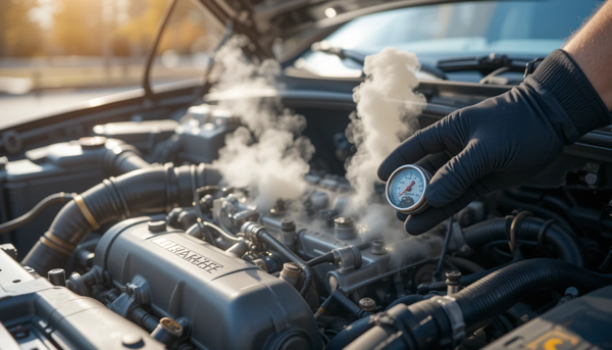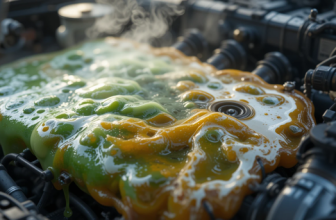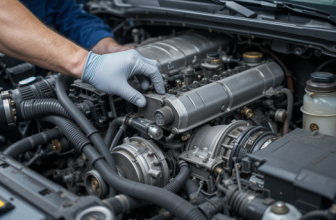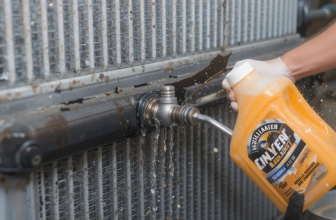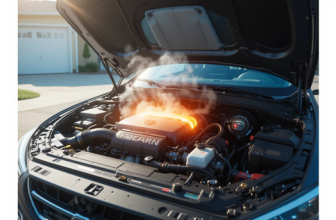Symptoms of a failing car thermostat include engine overheating, erratic temperature, and heater issues. Learn how to spot and fix them fast.
Symptoms of a Failing Car Thermostat 🚗🔥
Is your engine suddenly overheating out of nowhere? Or maybe your car’s heater isn’t blowing hot air like it used to? You might be dealing with a bad thermostat—and trust me, ignoring it can lead to costly repairs.
A thermostat is a small but mighty component in your vehicle’s cooling system. When it starts to fail, your car’s performance and safety can go downhill fast. Let’s walk through the key symptoms of a failing car thermostat, so you can catch the problem early and avoid a breakdown.
What Does a Car Thermostat Do? 🛠️
Before we dive into symptoms, let’s talk basics. Your car’s thermostat controls the flow of coolant between the engine and radiator.
Here’s what it does in simple terms:
- 🧊 Keeps the engine cool when it gets too hot
- 🔥 Helps the engine warm up faster in cold weather
- 🔁 Regulates temperature for optimal performance
When the thermostat fails, the whole cooling system gets thrown out of whack.
1. Engine Overheating Quickly 🚨
This is the number one red flag.
If your engine is getting hot too fast, your thermostat may be stuck closed. That means coolant can’t circulate and the heat builds up quickly.
Watch for these signs:
- Temperature gauge shoots up fast
- Steam from the hood
- Burning smell
Important: If you ignore overheating, it could warp your engine head or even crack the engine block.
2. Temperature Fluctuates Unusually 🌡️
Does the temp gauge bounce up and down while you’re driving? That’s a big clue. A failing thermostat might be sticking open or closed inconsistently.
Here’s what that could look like:
- Cold air blows out for a while, then suddenly hot
- Temp gauge drops, then spikes again
- No consistency in how hot or cold the engine runs
This constant change is tough on your engine and your nerves.
3. No Heat from the Cabin Heater ❄️
Trying to stay warm but the vents are blowing cold air? That’s another symptom of thermostat trouble.
When it’s stuck open, the engine might not reach normal operating temperature. That means no hot coolant flowing to your heater core.
You might notice:
- Cold air coming out of vents even when set to “hot”
- Cabin takes forever to warm up
- Defroster barely works
Common Thermostat Issues and Their Effects
| Thermostat Problem | Impact on Vehicle |
|---|---|
| Stuck Closed | Overheating, boiling coolant |
| Stuck Open | Engine runs cold, poor heater output |
| Opens Too Late | Slow warm-up, high engine stress |
| Fluctuating Performance | Erratic temperature, unstable ride |
4. Coolant Leaks Around the Thermostat Housing 💧
Coolant leaks are bad news, but leaks near the thermostat are a big warning sign.
The thermostat housing has a gasket. If the thermostat fails, it can cause the gasket to break.
You’ll often find:
- Green or orange puddles under the car
- Crusty white buildup around the housing
- Low coolant level in reservoir
💡 Tip: Check underneath your car after it’s been parked overnight. It’s the easiest way to spot small leaks.
5. Poor Fuel Economy ⛽
A failing thermostat can also cost you money. If your engine doesn’t get hot enough, it uses more gas.
That means you’ll need to fill up more often.
What to expect:
- Frequent trips to the gas station
- Car feels sluggish
- Check engine light may turn on
Over time, this can cost you hundreds of dollars in gas.
6. Engine Takes Too Long to Warm Up 🕒
Is your temp gauge low for too long after starting? That means your thermostat is stuck open.
When that happens:
- The engine never gets hot enough
- Your heater takes ages to work
- Fuel system stays in “warm-up mode” too long
🌬️ Not fun in the middle of winter, right?
How Thermostat Position Affects Symptoms
| Position of Thermostat | Typical Symptoms |
|---|---|
| Fully Closed | Overheating, boiling coolant |
| Partially Open | Inconsistent temp, delayed heater response |
| Fully Open | Low engine temp, cold heater, poor mileage |
7. Check Engine Light Comes On 🚦
Yep—your thermostat can trigger a check engine light. Many cars have sensors that detect when the engine is running too hot or too cold.
A failed thermostat will cause the engine control module (ECM) to flag a trouble code.
Scan tools may show codes like:
- P0128: Coolant Temperature Below Thermostat Regulating Temperature
- P0116: Engine Coolant Temperature Sensor Circuit Range/Performance
🔧 You can get these scanned at most auto parts stores for free.
8. Gurgling or Bubbling Sounds from the Engine 🫧
Weird sounds from under the hood? That could be air trapped in the cooling system—often caused by a faulty thermostat.
Listen for:
- Bubbling or boiling sounds after shutting off the engine
- Random gurgles when accelerating or idling
- Whining from the water pump due to trapped air
This might seem minor, but it can point to a bigger issue in your cooling system.
9. Coolant Flow Issues Seen in the Radiator 🚿
You can see if your thermostat is stuck.
If you remove your radiator cap (when the engine is completely cool), start the engine and observe:
- No flow: Thermostat may be stuck closed
- Immediate flow: Thermostat stuck open
- Delayed flow: Could be opening late or partially
🔍 Always be careful when inspecting the radiator—never open it hot.
Troubleshooting Thermostat Symptoms
| Symptom | DIY Action Step |
|---|---|
| Engine overheats | Inspect temp gauge, check coolant |
| Cold air from heater | Look for stuck open thermostat |
| Temp gauge fluctuates | Replace thermostat, bleed air |
| Coolant leak | Check housing, replace gasket |
| Poor mileage | Scan for codes, check warm-up times |
10. White Smoke from the Exhaust ☁️
This can be scary. If your thermostat fails and the engine overheats badly, you could blow a head gasket.
Signs include:
- White smoke from the tailpipe
- Milky oil or coolant
- Sweet smell from the exhaust
👎 If you’re here, it’s already serious. Don’t drive it—tow it.
How to Test Your Thermostat at Home 🔍
Want to be sure before heading to the shop? You can test your thermostat using boiling water.
Steps:
- Remove the thermostat from your engine
- Drop it in a pot of boiling water
- Watch to see if it opens
- If it doesn’t open or opens partially—replace it
⚠️ Only do this if you’re confident in your mechanical skills.
When Should You Replace Your Thermostat? 🔁
Most thermostats last between 50,000–100,000 miles. But if you’re seeing any of the signs above—don’t wait.
Replace it when:
- Your engine overheats
- Cabin heat stops working
- You see coolant leaks or code P0128
Thermostats are cheap. Engines are not.
Conclusion ✅
A failing car thermostat may not seem like a big deal—until it’s too late.
It affects your engine’s temperature, performance, and even fuel economy. By learning the symptoms of a bad thermostat, you can catch problems early and avoid major repairs.
Here’s the takeaway:
- Watch for overheating and temp changes
- Don’t ignore cold air from your vents
- Keep an eye on coolant levels and leaks
Fix it early, save your engine, and enjoy peace of mind on the road.
FAQs
What causes a thermostat to go bad in a car?
It often fails due to age, corrosion, or overheating. Cheap coolant or mineral buildup can also cause it to fail.
Can a bad thermostat affect my car’s heater?
Yes! If the thermostat is stuck open, the engine won’t heat up. This makes your heater not work right.
Is it safe to drive with a bad thermostat?
No, it’s not safe. It can cause the engine to overheat or get damaged. You should fix it quickly.
How much does it cost to replace a car thermostat?
Replacing it costs $150–$300. This depends on your car and where you live.
Can a thermostat cause poor gas mileage?
Yes. If the engine is too cold, it uses more fuel to warm up.
References
https://www.motortrend.com
https://www.autoblog.com
https://www.caranddriver.com

